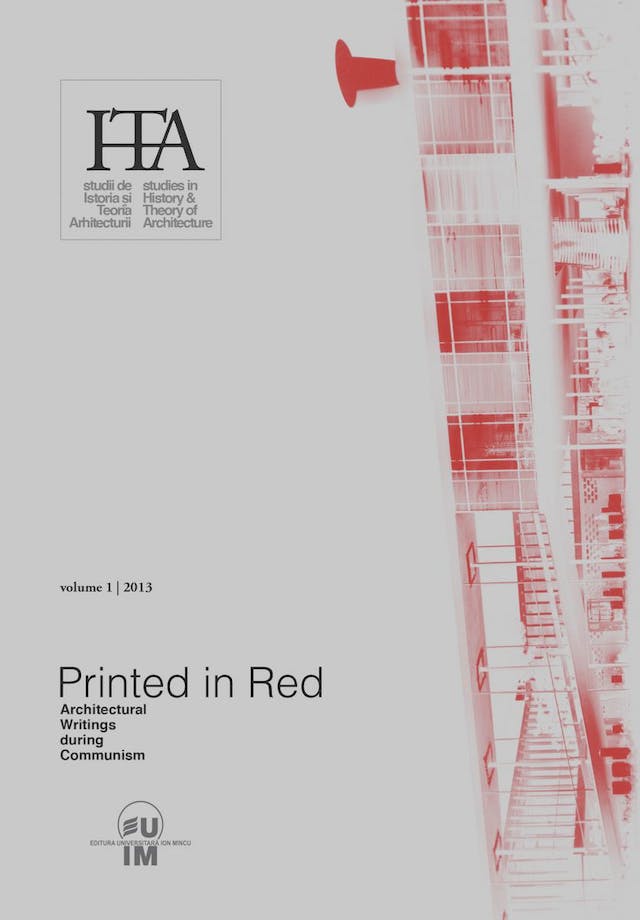…the professional culture is also about the numerous books piling on top of one anotherInterview with Nicolae Lascu
…the professional culture is also about the numerous books piling on top of one another
Interview with Nicolae Lascu
by
Monica Sebestyen
&
Nicolae Lascu
translated by
Daniela Calciu
In the inauspicious ideological climate of 1980s, professor Nicolae Lascu, at the time assistant-professor in our School’s Urban Planning Department, was one of the very few architects of his generation (the classes of the 1970s) who dared address in writing the architectural thinking and culture. Generally speaking, the architectural books of that period (and also those of the previous decades) were authored by acknowledged figures of Romanian architecture and historiography and were dedicated, with very rare exceptions, to architectural history or to the architectural achievements of the moment; theory of architecture was allotted very limited space. Neither the translations from foreign literature (very few[1]), nor the articles published in the architectural magazine Arhitectura were inclined to favour purely theoretical matters or reflective approaches to architecture. Or, Nicolae Lascu’s two annotated anthologies – Architecture as Art (with Monica Mărgineanu-Cârstoiu) and Function and Form, – published in the prestigious Art Library collection of the Meridiane Publishing House, brought to the fore the architectural thinking in its universal cultural bearing. Likewise, the earlier Aesthetic Thinking in Romanian Architecture (with Gheorghe Săsărman) was the first critical approach to Romanian theory of architecture, while the monograph Florea Stănculescu: Contributions to Affirming Romanian Architecture was the first real critical study dedicated to this Romanian architect, thinker and editor[2]. It has to be said that the first two titles are still, to this very day, singular in our architectural culture and publishing activity.
After 1989, Nicolae Lascu particularly focused on the local forms of architectural modernisation and on the past and present transformations of the city of Bucharest, which resulted in many research-projects and other volumes: Horia Creangă Centennial (with Ana Maria Zahariade), Marcel Janco Centennial (with Anca Iliescu-Bocăneț and Ana Maria Zahariade) and, especially, the monumental work “Bucharest’s Boulevards before World War I” (Bucharest: Simetria, 2011). The latter is actually a deeper investigation in the research field of his doctoral thesis, Legislation and urban development. Bucharest, 1831-1952[3], which is an inescapable key to understanding the city; this work is still unpublished but largely referenced in the research milieus.
All of Nicolae Lascu’s works are seminal, which is why we decided to open the Printed in Red dossier with the interview that he so kindly gave our colleague Monica Sebestyen.
[1] Only 6 of the 11 translations found in the National Library are about architectural theory: Vitruviu’s De architectura, 1964, Palladio’s I Quattro Libri dell’Architettura, 1957; Vignola’s Regola delli cinque ordini; Bruno Zevi’s Saper vedere l‘architettura, Le Corbusier’s Essential Joys (short selection of texts), 1971; Argan’s Gropius and the Bauhaus, 1976.
[2] Gândirea estetică în arhitectura românească, Bucharest: Ed. Meridiane, 1983; Florea Stănculescu: contribuții la afirmarea arhitecturii românești, Bucharest: Ed Tehnică, 1987; Arhitectura ca artă, Bucharest: Ed. Meridiane, 1987; Funcțiune și formă, Bucharest: Ed. Meridiane, 1989.
[3] “Legislație și dezvoltare urbană. București, 1831 –1952” (PhD. diss. UAUIM, 1997)
Chicago citation style
DOI:
10.54508/sITA.1.03
